Weather: Russia (including European Russia), Armenia, Azerbaijan, Georgia
Although its reputation precedes it, Russia's climate is extreme only after a particular fashion. There's no sugar-coating the fact that Russian winters are extremely cold. Yet much of the country enjoys warm mid-summer days that average above 20°C/68°F, and there are even a few bona fide hot spells. Thunderstorms are seldom intense outside of the […]
Weather: European holiday islands
Most of what you need to know about the weather on the islands between Europe and Africa is summed up in the name of the sea that holds them. The Mediterranean's world-famous climate plays out on all of its islands through variations on a familiar theme: warm-to-hot summers that are bone-dry, and mild winters with […]
Weather: Poland
As spacious as it is, Poland doesn't have much in the way of dramatic climate variations from place to place. What varies most is the weather itself, from day to day and season to season. The country isn't quite as mercurial as Russia when it comes to temperatures, but Polish weather can surprise a visitor […]
Weather: Ireland
Ireland is less likely than the UK to surprise visitors with unexpected weather. Positioned further into the Atlantic, the Emerald Isle has a more uniform temperature regime than the UK, and over 50 percent more rain as a whole. Cold snaps tend to lose their punch by the time they make it across the sea […]
Weather: Iceland
It may not quite live up to its name, but Iceland is indeed a chilly place. Reykjavik is the world's northernmost capital (aside from Nuuk, Greenland), and it may also be the one with the coldest summers: in July, the average highs stay below 14°C/57°F. Warm ocean currents and the most favoured track of North Atlantic […]
Weather: Greece
It's hard to summarize the climate in a land with 2000 islands, high mountain peaks, and exposure to air masses that range from sub-tropical to polar. Nearly all of Greece is ruled by a Mediterranean regime, which means that precipitation is focused in the cool season. Summers are virtually rain-free: the best chance for a […]
Weather: Germany
Although Germany covers a fair amount of north–south distance – from the Alps to the northern seas – the weather doesn't vary a tremendous amount across this reach. There's no more than about 5°C/8°F difference in the average temperatures of Germany's major cities. As is the case elsewhere in northwest Europe, it rains or snows […]
Weather: France
Although it's not an island like its neighbour across the English Channel, France is bordered on three sides by water. The Atlantic and Mediterranean help to moderate the temperature swings that otherwise might occur at France's latitude. The ragged northwest coast of Brittany and Normandy has a climate not too dissimilar to much of Great […]
How does weather shape France’s wines?
More and more wine is being grown in places with hot Mediterranean-style climates, Australia and California among them. But France's unique blend of landscape and weather – its terroir – has nurtured the grape for centuries. Experts have found that wine grows best in regions with cool winters that are a little above freezing and […]
Weather: Belgium, Luxembourg
Belgium is a land of gentle transitions meteorologically as well as culturally. The weather of Flanders is very similar to that of the adjacent Netherlands: cool winters, milder summers (especially as you move inland) and, in all seasons, frequent – through seldom intense – rain. As you move south into Wallonia, the climate becomes a little more […]
Weather: Europe
By and large, European weather obeys the dictum “moderation in all things”. When compared to other mid-latitude continents, Europe is indeed a favoured child. Tornadoes, hurricanes and blizzards may fling themselves at the United States; China may endure intense heat and brutal cold; but most of Europe trundles along with relatively few weather worries. In […]
Will Europe get the big chill?
It's not out of the question that global warming could produce cooling rather than warming across northwest Europe. This strange scenario was first proposed decades ago by geochemist Wallace Broecker, and it was the idea behind the blockbuster 2004 film The Day After Tomorrow, where it played out on a cinema-convenient time scale of a […]
Europe feels the heat
Records melted like ice cubes across Europe during the astonishing summer of 2003. Pulses of heat plagued much of the continent in June and July, but by far the worst occurred in the first two weeks of August. Many areas topped 35°C/95°F day after day, with nights often staying above 20°C/68°F. England saw its first […]
Poland Looks Ahead
Memorization of places, dates, and names is like fool's gold, someone once stated, because it is so easy to mistake them for the real thing: knowledge. Yet, when we study nations and cultures, we often commit exactly this mistake. A long list of kings and generals is supposed to provide us with thorough insight into […]
Living in Poland Today
Poland is not a small country, and, as in any sizable country, pronounced regional differences exist. The study of these spatial variations is what makes geographers ideal students of nations and cultures. Unlike other scientists, geographers identify the significance of a place or region as it relates spatially to a larger whole. This type of […]
Poland’s Economy
The collapse of the Berlin Wall in 1989 and the subsequent changes that swept Eastern Europe were seen as a very positive transition for Poland. The country was in position to open its economic system and follow the rules of a market economy. Previously, it had labored under a politically manipulated, centrally planned economy. Poland […]
Poland: Government and Politics
After striving for many years to be in charge of their own affairs, Poles managed to topple the Soviet-supported authoritarian regime that ruled the country for several decades. In theory, Poland was an independent country pursuing its own destiny. In reality, its political leadership received instructions from Moscow. Puppet regimes often face popular discontent, and […]
Poland: People and Culture
The chapter on the people of Poland and their culture (way of life) serves as the main focus in the review of this modern world nation. To this point, we have covered the physical landscapes and historical geography of Poland. Here, the emphasis is on what people are doing and why, as well as the […]
Poland Through Time
When describing the earliest history of particular countries, historians often have little to say because of the lack of documented historical evidence of names and dates. Most scholars prefer political history to cultural history in general, where they can discuss key leaders and events—kings, wars, and dynasties, for example—but pay little attention to the lives […]
Poland: Physical Landscapes
A country's physical environment can offer opportunities and challenges to its people. Poland's natural conditions are no exception. Nature provides the canvas upon which people paint their own unique cultural landscapes—the human imprint on Earth's surface. People are guided by their particular needs, as well as by the financial and technological resources they command. The […]
Introducing Poland
To celebrate their national identity, many people have myths that begin with the phrase, “When God was distributing the land, our people received. . . .” For the Poles, such a myth should begin “God awarded us with prime property in a bad neighborhood, located right between two neighboring bullies who constantly fight.” For a […]
The Future of Ireland
Each chapter of this geography of Ireland has told a story about Ireland's physical, cultural, historical, economic, and political, geographies. Knowing more of Ireland through these stories may have changed some perceptions of the country while strengthening others.Visitors to Ireland would experience many of the stories told in this book and would also form new […]
Living in Ireland Today
Fado, fado, the Celts began the tradition of storytelling in Ireland. Storytelling today is just one aspect of Irish culture and daily life that is celebrated in annual festivals throughout the country. Irish festivals can last one or two days, or even a month. Among the most notable festivals are the storytelling festivals in the […]
Ireland’s Economy
Fado, fado, Ireland's economy was at the simplest and most basic level of development. The ancient Irish hunted the land, fished the lakes and streams, and foraged the forests in order to find the foods they needed to survive. Interestingly, they never turned to the sea as a major source of food. A huntinggathering (and […]
Government and Politics of Ireland
Fado, fado, the Celts ruled Ireland as a multitude of kingdoms, with one overall, high king. When the Anglo-Normans came to Ireland, they ruled the area within their own kingdoms, building castles throughout the land. During British colonization, the Irish had little control over their land. As the colonizer, the United Kingdom ruled the land […]
Irish People and Culture
Fado, fado, Ireland was populated by people from the Eurasian landmass. Racially, the Irish are linked to Western Europe and Scandinavia. The Celtic culture came to envelop Ireland during the years of Celtic domination. Saint Patrick and Christian missionaries brought the Catholic religion to Ireland. Vikings intermarried with the Irish resulting in some genetic changes. […]
Ireland: Culture History and Cultural Landscape
Fado, fado, with the end of the Ice Age, 12,000 years ago, the glaciers retreated. They left Ireland covered with glacial debris and tundra vegetation. It was a barren land, with limited varieties of plant and animal life. This is the setting in which Ireland's changing culture history and cultural landscape takes place. Over the […]
Ireland’s Physical Environment
Fado, fado, Ireland's geologic roots began with the formation of Western Europe. The island of Ireland today is a direct result of the earth-building forces that created Eurasia over two billion years ago. Over time, layers of sediment accumulated on the floor of ancient geologic seas, creating limestone. A mixture of this limestone and lava […]
Ireland: Introduction
Perception is a key to understanding the geography of Ireland. Images or perceptions can be created from pictures and stories about Ireland or from family, television, books, and newspapers. For many people, Ireland is perceived as a land of eloquent poets, renowned writers and playwrights, lyrical musicians, and creative dancers.Among these many talented literary and artistic […]
Iceland Looks Ahead
For twelve centuries the people of Iceland have struggled against countless obstacles and won. There is ample reason to believe that they will continue to do so in the future. The country's natural resources are meager, yet on this small, remote, rugged island nation, Icelanders have developed one of the world's most enviable standards of living. […]
Visiting Iceland
Iceland has been discovered by visitors. The ease and relatively low cost of air travel, and the country's marvelous physical and cultural environments, have placed the island country on the map of tourist destinations. In this chapter, you will view Iceland through the eyes of a guest traveler. GETTING THERE Almost everyone who travels to […]
Economy of Iceland
Iceland's Scandinavian-type economy is basically capitalistic and similar to that of the United States and Canada. In addition, an extensive modern welfare system is in place. This covers the medical needs of the Icelandic people, with extensive medical, dental, and eye-care benefits. Free education (from preschool to the university level), guaranteed retirement pay, and high […]
Iceland’s People and Their Way of Life
Icelanders enjoy one of the world's highest standards of living and longest life expectancies. As has been mentioned, it is one of the world's most literate societies, with nearly 100 percent of all adults able to read and write. Surveys suggest that it is also one of the most honest countries, with very little crime […]
Iceland Through Time
In this chapter, our primary focus is on Iceland's culture—as created by its people and their past. The country has a fascinating and somewhat contradictory history. Among major world nations, for example, it was one of the very last countries to be settled. In this respect, it has a very brief history, although its governing […]
Iceland: Landscapes of Fire and Ice
Iceland's physical geography can be summarized in three words: fire, ice, and sea. The island country rose from the sea as molten volcanic material. Today, approximately one-eighth of Iceland remains buried under glacial ice or permanent snow cover, but volcanic activity continues to be an omnipresent threat to the island's people and property. As in […]
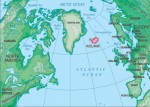
Iceland: A Unique Land and People
By almost any measure, Iceland is one of the world's most unique lands. It is a remote, far northern island country that holds many mysteries and contradictions. Physically, it is a land whose features have been shaped and reshaped by the opposing agents of fire and ice. Its first inhabitants were Irish monks who sought […]
Germany Looks Ahead
Charlemagne is often recognized as the founder of the French nation, but he was also responsible for the creation of the Holy Roman Empire and the development of the many small states within the Kingdom of Germany. Somewhat ironically, another French leader, Napoleon, was responsible for the fall of the Holy Roman Empire. From this […]
Living in Germany Today
Between 1945 and 1990, Germany was divided into a prosperous capitalist West Germany and a poorer Communist East Germany. Nonetheless, people in East Germany lived better than those in other Eastern European countries. Most had a television, a refrigerator, and a car even if they were of poorer quality and came with a high price […]
Germany’s Economy
Typical of modern industrialized countries, Germany has fewer than 3 percent of its workforce engaged in extractive industries. The North Sea has been a traditional fishing ground with herring being the most important catch. However, over-fishing has resulted in a decline in the fishing industry, and Germany now relies on imported fish to meet its […]
Germany: Government and Politics
The modern political history of Germany is usually considered to have begun in 1871, when the German Empire was formed. It will be remembered that prior to this time, Germany consisted of hundreds of very small states that had been gradually unified into the 39 states of the German Federation. In 1848, representatives were elected […]
Germany: People and Culture
Given the devastation of two world wars, it might be expected that the population of Germany would be relatively small. In fact, with slightly more than 82 million people, Germany's population is nearly 20 million larger than that of any other European country except Russia. This chapter examines the people of Germany—their demographic makeup, economic […]
Germany Through Time
Remains of the earliest people known to have lived in the area of present-day Germany were found in the Neander Gorge near the city of Dusseldorf in 1856, thus they were called Neanderthals. They were cave dwellers who lived more than 30,000 years ago. Although a human species, Neanderthals were not entirely identical to present-day […]
Germany: Physical Landscapes
Germany has an area of 137,847 square miles (357,021 square kilometers). It stretches about 520 miles (840 kilometers) north to south, reaching from 47 to 55 degrees north latitude, and 385 miles (620 kilometers) east to west, between 6 and 15 degrees east longitude. The terrain can be divided into three regions that increase in […]
Introducing Germany
A review of twentieth-century history would be incomplete without reference to Germany. During the past century, Germany was involved in two world wars. Following its defeat in World War II, its division into East and West became a major symbol of the larger division of the postwar world, just as its reunification in 1990 served […]
Future of Croatia
Although its recent past has been quite troubled, Croatians are optimistic about their country's future. But it is up to them to ensure that the future is, indeed, bright. The country shares many of the same problems that hinder stability and development in most other former Eastern European socialistic states. Achieving political and economic stabilization […]
Croatia: Regions and Cities
Geographers often divide the world and its various areas into regions. A region is an area that is united in some way by one or more elements. In the United States, for example, people often speak of the “South,” or the “Midwest.” Croatia is divided into several regions. Chapter 2 discussed Croatia's three basic land […]
Croatia: Government and Economy
Since 1990, when the one party socialist system was eliminated, Croatia has existed as a parliamentary democracy. A national constitution was approved in December 1990, and independence was proclaimed on June 25, 1991. The country's flag has horizontal bands of red, white, and blue upon which appears the Croatian coat of arms that includes symbols […]
Croatia: People and Culture
Who are the Croats? What are they like? How do they live? What do they do? These are just some of the questions that will be answered in this chapter. Croatian People Almost every nation has a legend about its origins, and the Croats are no exception. According to Croat legend, in the distant past […]
Croatia Through Time
Croatia, as is true of all countries in Eastern Europe, has a long and complex history. This chapter discusses the past and the people, cultures, and events that have shaped present-day Croatia. In the Beginning Archaeological evidence suggests that humans inhabited the area of what today is Croatia as early as 100,000 years ago. More […]
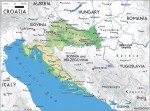
Croatia: Physical Environment
In terms of its natural environment, Croatia is a tourist's dream come true. The country shares many similarities with California. Both are blessed with a very mild and pleasant Mediterranean climate. They both have long coastlines that rank among the world's most scenic. Each location has varied terrain, contributing to diverse landscapes and ecosystems. Unlike […]
Introducing Croatia
A map of Europe looks much different today than it did just a decade or two ago. In the late 1980s, Europe was divided into two political spheres—the democratic West and the Sovietdominated East. Only a few countries were neutral in this Cold War, or ideological conflict, between Eastern and Western Europe. Today, the Soviet […]
Belgium Looks Ahead
The author has been careful to emphasize the difference between Belgium and what is now increasingly referred to in Europe as “Brussels.” The former is the country and its people, and “Brussels” is a term often used for the huge controlling bureaucracy that is the European Union (EU). This powerful entity is not to the […]
Living in Belgium Today
It is sometimes said that many people in Europe hold a rather negative image of Belgium. Undoubtedly, the country is sharply divided by language. This division causes a seemingly endless separation of people, politics, government, administration, media, and other aspects of society and culture. It is a densely populated country and one that is often […]
Belgium’s Economy
Belgium is located in one of the most industrialized areas of Europe. Because of its industrial strength— and hence, employment opportunities—it is also one of the most densely populated. The per capita gross national product (GNP) for the Flemish and Central regions ranks among the highest in the entire European Union (EU); the average figure […]
Belgium: Government and Politics
Belgium is a federal state in which amendments to the Constitution that were made in 1993 have resulted in a further reduction in the power of national government. What were formerly national powers have now been granted, at least to some degree, to regional and community governments. First, however, let us examine the various levels […]
Belgium: People and Culture
Few countries are so equally divided by language and other aspects of culture as Belgium. Yet, despite the conflicting interests of the two main population groups, the country has achieved a unity that does not appear to be seriously threatened. Although there have been, and still are, significant separatist and nationalist movements, especially among the […]
Belgium Through Time
The area of Europe that includes Belgium lies open and exposed on the European plain. It has often been referred to as the “Battlefield of Europe.” Bloody and seemingly endless wars between different European powers were repeatedly fought here. It was not always a single nation known as Belgium; the country's name derived from that […]

Belgium: Physical Landscapes
Belgium has a land area of 11,787 square miles (30,528 square kilometers), which, as already has been noted, is roughly equivalent in size to Maryland. Most of the country's territory lies on a huge lowland plain that stretches from the Pyrenees eastward to the Urals. In this chapter, we will look at Belgium's land areas, […]

Welcome to the Kingdom of Belgium
The small country of Belgium hugs the coast of the North Sea in northwestern Europe. It is bordered by Germany to the east, the Netherlands to the north, and France to the south and southwest. The smaller Grand Duchy of Luxembourg borders Belgium's southeast corner. There, the dense forests and rolling hills of both countries […]
The European Union
Europe's long history of conflict reached a crisis in World War II (1939-1945). In the wake of that destructive war, two goals emerged: to rebuild the nations' shattered economies and to prevent new conflict. Some people believed the best way to achieve both goals was to unify Europe. As you read the Case Study, consider […]
Cleaning Up Europe
A HUMAN PERSPECTIVE In January 2000, a gold mine in Romania released cyanide into local streams. The cyanide, a deadly poison, flowed into the Tisza River in Hungary. Before the accident, the river held some of Europe's rarest fish. The poison killed an estimated 80 percent of the fish in the Tisza. Balazs Meszaros, whose […]

Turmoil in the Balkans
A HUMAN PERSPECTIVE The Serbian leader Slobodan Milosevic tried to increase Serbia's power over the rest of Yugoslavia. As a result, in 1991 and 1992, four republics left Yugoslavia. Serbia went to war against them but lost. In 1999, an international court accused Milosevic (who was the Yugoslav president by then) and Serbian troops of war […]

Eastern Europe
A HUMAN PERSPECTIVE Eastern Europe has many plains that allow invaders to move from east to west and vice versa. In World War II, Germany invaded the Communist Soviet Union, killing millions. After the war, the Soviet Union decided to protect itself from invasion by setting up a political barrier. So it established Communist governments […]

Northern Europe
A HUMAN PERSPECTIVE In World War II, Germany perfected a new military tactic, the blitzkrieg. Using a massive force of dive-bombers, tanks, and artillery, the German army rapidly surprised, attacked, and defeated a foe before it could mount a defense. Germany used blitzkriegs to invade Poland, Belgium, the Netherlands, and France. But Germany couldn't launch […]

Western Europe
A HUMAN PERSPECTIVE Today, the French call Emile Durkheim the father of French sociology (the study of society). But he wasn't always honored. During World War I, some French patriots considered him a disloyal foreigner. Why? Perhaps it was because he had a German last name and came from Lorraine, a region that had switched […]
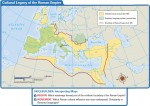
Mediterranean Europe
A HUMAN PERSPECTIVE Have you ever heard the saying, “All roads lead to Rome”? The Mediterranean region was home to the two great civilizations of ancient Europe—ancient Greece and ancient Rome. The city of Rome was founded in about 753 B.C., and Rome conquered a huge empire by about A.D. 100. To aid communication and […]

Europe: Human–Environment Interaction
A HUMAN PERSPECTIVE “1800 DIE IN WIND-WHIPPED FLOOD WATERS!” February 1, 1953, witnessed a disaster in the Netherlands. Winds estimated at 110 to 115 miles per hour piled up gigantic waves that ripped through dikes—earthen banks—holding back the North Sea. When the storm was over, 4.5 percent of the Netherlands was flooded, and thousands of […]

Europe: Climate and Vegetation
A HUMAN PERSPECTIVE Because of Greece's mild climate, the ancient Greeks spent much time outdoors. Greek men liked to talk with their friends in the marketplace. They also enjoyed sports. Large crowds gathered for athletic contests that were held during religious festivals. The most important of these was a footrace held every four years in […]

Europe: Landforms and Resources
A HUMAN PERSPECTIVE Elephants in Europe? In 218 B.C., Hannibal, a general from Carthage in North Africa, attacked the Roman Empire, which was at war with Carthage. He moved 38 war elephants and an estimated 60,000 troops across the Mediterranean Sea to Spain. To reach Italy, his armies had to cross the Pyrenees Mountains, the […]
France’s Future
Prediction is always a chancy thing. We may ask, “What will France become in the future, how may she change?”We can give few firm answers, though.What we can do is to try to project a short distance into the future some of the trends of recent times, and to at least raise some possibilities with respect to certain matters. […]
France’s Economy and Communications
France ranks fourth among countries in terms of its economy, with a gross domestic product (GDP) of around $1.5 trillion. Per-capita purchasing power is the equivalent of about U.S. $24,500 per year (compared with the U.S.'s $34,100 in 2002). AGRICULTURE France is an agriculturally favored country—60% of its land is arable and over half is cultivated—and produces prodigious quantities of […]
France’s Government
NATIONAL GOVERNMENT The constitution of today's Fifth Republic—“a subtle blend of authoritarianism and parliamentary democracy” (wrote James Corbett)—provides for a president and for a bicameral legislature consisting of a Senate and a National Assembly. The president of the republic (currently, Jacques Chirac) is elected for a seven-year term by direct universal suffrage on the part of those over 18 years of […]
Population, Culture Regions, and Social Institutions
Fifty million Frenchmen can't be wrong,” goes the old saying, but there are now more than sixty million French citizens in metropolitan and overseas France. They account for 16% of the European Union's population and rank France twentieth among world countries. Approximately 75% of the country's population is urban, living in towns of 2,000 or more people. This is in […]
France in the Modern Era (1830–Present)
In many respects, a three-day Paris revolution in 1830, which installed Louis Philippe as king, marks the beginning of the modern era for France. In that year, the country began to rebuild an overseas empire, as the conquest of Algeria began. Important political changes occurred as well, including a reduction of lavish living by kings and the endorsement of more […]
French History to 1830
A deep sense of the past is very much part of French character. Glorious monuments of that dramatic and creative past are revered treasures, the inheritance of the nation. Because of its respect for the past, France exceeds most other countries in its historic-preservation efforts. The history of any country, France included, is made up both of important individual events […]
Natural Environments and Landscapes
France possesses a varied and productive physical environment. In this chapter, you will learn about the country's diverse land features, climates, soils, wild vegetation, and mineral resources. LANDFORMS Although considered a lowland country, France's physical geography is, in fact, extremely varied, ranging from high, rugged mountains to low-lying sandy coastal plains. Running northward and eastward through France is a major drainage […]

Introducing France
Historically and culturally, France is one of the most significant nations of Western Europe. The country is favored by nature, with a variety of landforms, climates, and resources as well as with rich and varied agricultural lands. Strategically, it is located between the Mediterranean Sea and the Atlantic Ocean. The country has played a pivotal economic, political, and cultural role in […]
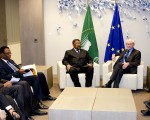
European Communities
Millions of Europeans live in communities scattered throughout Africa. Many of these communities date from the early decades of colonialism. In general, the numbers of European settlers in Africa gradually increased during the colonial period and then fell immediately after the colonies became independent nations. The population of SOUTH AFRICA includes more than 5 million Europeans, the largest community of Europeans […]
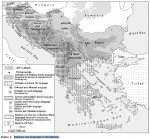
A Geopolitical Region Where Major Powers Meet: The East, the West, an ‘In-Between’ Europe
On 1 January 2006, the peninsula comprised eight states: Greece, Albania, Bulgaria, and, resulting from the dismantling of Yugoslavia, Macedonia, Serbia Monte negro, Bosnia Herzegovina, Slovenia, and Croatia. Turkey also has a fragment, and its first city, Istanbul. Romania is also sometimes classified as a Balkan state. The de composition of what was the Yugoslav territory until 1991 is still underway: Bosnia […]
The Sustainable Rural Development Paradigm in Europe
Since the 1990s a fledgling, sustainable rural development model has been emerging, at least in a European context which has incorporated many of the principles of sustainable agriculture, specifically, agroecology. While building upon the multifunctional assumptions, but also adapting many of the agroecological principles developed in Southern countries, this model attempts to reintegrate agriculture as a multifunctional set of practices. […]
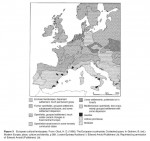
Early and High Medieval Europe
In many parts of Europe, within as well as outside the struggling Roman Empire, the third to fifth centuries AD were a period of crisis and de population. This was followed by a slow recovery in the following centuries. During the seventh to ninth centuries, the peripheries of Europe, Scandinavia, Ireland, Muslim Spain, and the Byzantine Empire, showed the more […]
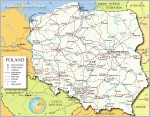
Poland
Area 120,728 square mi (312,685 square km) Population 38.00 million 2014 Capital Warsaw Highest Point 8,199 ft (2,499 m) Lowest Point -6.6 ft (-2 m) GDP $548.0 billion 2014 Primary Natural Resources coal, sulfur, copper, natural gas, silver. POLAND IS LOCATED in eastern Europe, and is surrounded by the Baltic Sea to the northwest, GERMANY […]
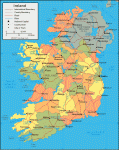
Ireland
Area 27,135 square mi (70,280 square km) Population 4.613 million 2014 Capital Dublin Highest Point 3,414 ft (1,041 m) Lowest Point 0 m GDP $245.9 billion 2014 Primary Natural Resources zinc, lead, natural gas, barite, copper, gypsum. THE REPUBLIC OF Ireland covers five-sixths of the island of Ireland and shares its only border with Northern […]
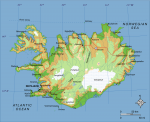
Iceland
Area 39,769 square mi (103,000 square km) Population 327,600 2014 Capital Reykjavik Highest Point 6,950 ft (2,119 m) Lowest Point 0 m GDP $17.07 billion 2014 Primary Natural Resources hydropower, geothermal heat. ICELAND IS A volcanic island lying on the Mid-Atlantic Rift 170 mi (280 km) southeast of GREENLAND and 500 mi (800 km) northwest […]
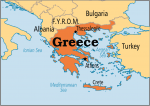
Greece
Area 51,012 square mi (130,800 square km) Capital Athens Population 10.96 million 2014 Highest Point 9,626 ft (2,917 m) Lowest Point 0 m GDP $237.6 billion 2014 Primary Natural Resources bauxite, lignite, magnesite, petroleum. FOR OVER 4,000 years, Greece has been at the crossroads of civilizations. The great empires of the Western and Eastern worlds […]
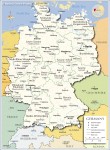
Germany
Area 137,845 square mi (357,021 square km) Population 80.89 million 2014 Capital Berlin Highest Point 9,721 ft (2,963 m) Lowest Point -11 ft (-3.54 m) GDP $3.853 trillion 2014 Primary Natural Resources iron ore, coal, potash, timber, lignite. THE FEDERAL REPUBLIC of Germany is one of the largest countries and has the largest population in […]

France
Area 212,796 square mi (545,630 square km) Population 66.20 million 2014 Capital Paris Highest Point 15,863 ft (4,807 m) Lowest Point -6.6 ft (-2 m) GDP $2.829 trillion 2014 Primary Natural Resources coal, iron ore, bauxite, zinc, potash, timber. ONE OF THE DOMINANT nations of Europe since the 9th century, and of the world since […]
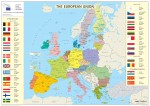
European Union
THE EUROPEAN UNION (EU), with 25 member states in 2004, had its initial organization created after World War II for the purpose of rebuilding Europe after the turmoil and devastation of the war. It was thought that economic and political cooperation would greatly reduce the risks of repeating such a conflict and would be the […]
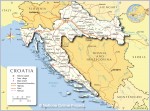
Croatia
Area 22,000 square mi (56,542 square km) Population 4.236 million 2014 Capital Zagreb Highest Point Dinara 604 ft (1,830 m) Lowest Point 0 m GDP $57.22 billion 2014 Primary Natural Resources oil, coal, bauxite, hydropower. CROATIA IS AT once one of the oldest and newest states in Europe. There has been a Croatian state of […]
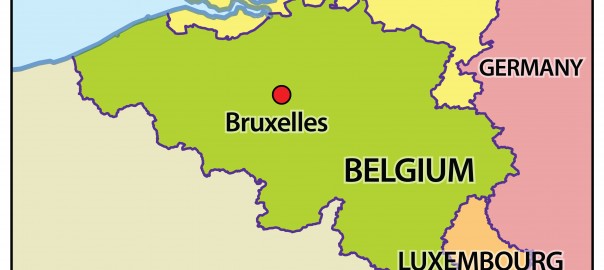
Belgium
Area 11,790 square mi (30,510 square km) Population 11.23 million 2014 Capital Brussels Highest Point Signal de Botrange 2,290 ft (694 m) Lowest Point 0 m GDP $533.4 billion 2014 Primary Natural Resources coal, natural gas. ALTHOUGH IT OCCUPIES a central position at the economic crossroads of western Europe, and its people have been central […]